A clear win and a controversy
Team USA defeated Team India by a clean 5–0 scoreline on Saturday evening at the Checkmate: USA v. India exhibition in Arlington, Texas. The event, staged at Esports Stadium, marked another step in the ongoing experimentation with chess as a live spectator sport.
The final game of the night between Hikaru Nakamura and Gukesh Dommaraju ended with a flourish that underscored the unusual atmosphere of the evening. After securing victory, Nakamura lifted his opponent’s king and tossed it into the cheering audience, before raising his arms in celebration – an image that summed up the organisers’ attempt to present chess as a high-energy arena experience.
Nakamura’s throwing of the king fuelled a controversy, explained below by IM Levy Rozman, a.k.a. Gotham Chess, who was among the participants in the match.
Format and rules
The event’s format was as unconventional as its presentation. Each of the five games featured one representative from each country, played consecutively so that the audience could follow every move in real time. The time control was 10 minutes per side, with a one-second increment only activated once a player’s clock fell below one minute – an unorthodox setting that is not even supported by most standard chess clocks.
Draw offers and resignations were prohibited. All games had to be played to completion, ending in checkmate, flag fall or a theoretically drawn position such as bare kings. In case of a draw, the contest continued with faster games – first a five-minute game, and if necessary, a one-minute shoot-out – until a decisive result was reached.
The players entered the stage in team jerseys, walking through a corridor of supporters and greeting spectators with high-fives before taking their seats, setting the tone for an evening that departed sharply from the quiet, classical setting of most elite events.
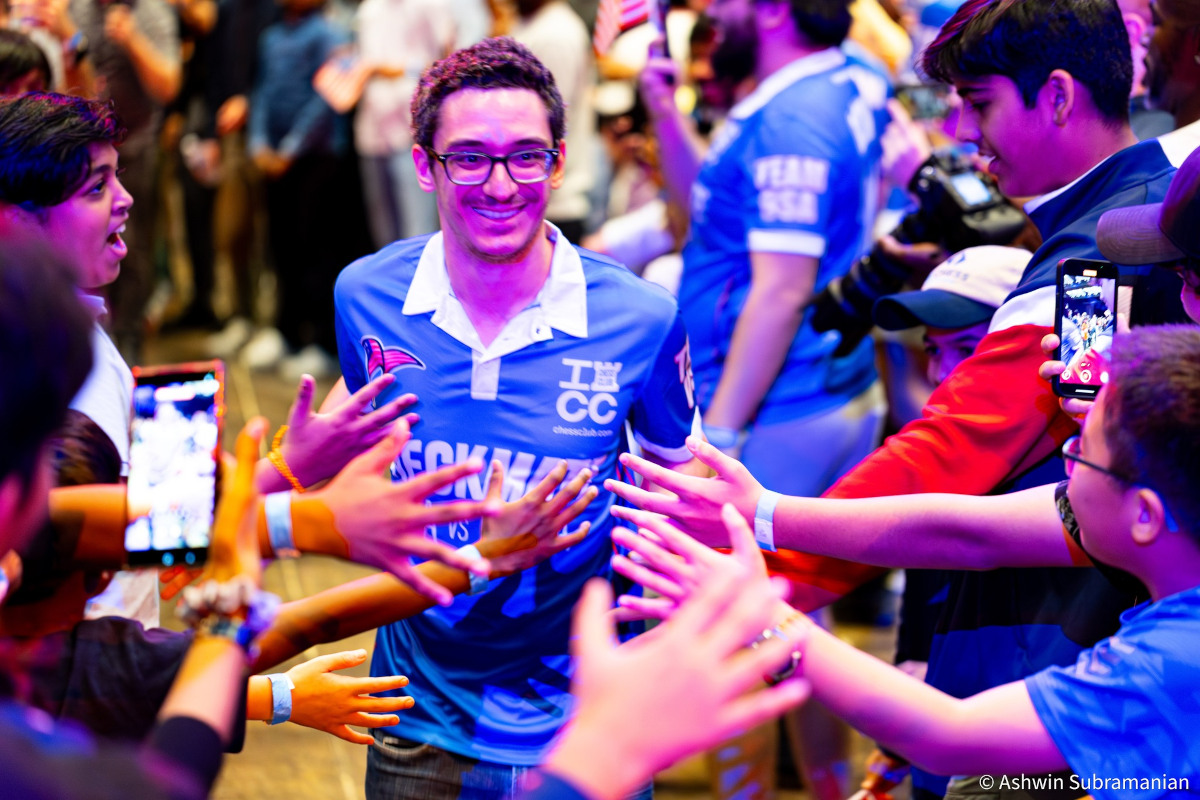
Facing the Sicilian doesn’t have to be complicated. The Alapin Variation (1.e4 c5 2.c3) offers a simple yet highly effective solution to all major Sicilian lines, by sidestepping them with 2.c3. Whether your opponent plays the Najdorf, Taimanov, or Dragon, the Alapin lets you take control of the game as early as move two.
Free video sample: Introduction
Free video sample: 2…g6
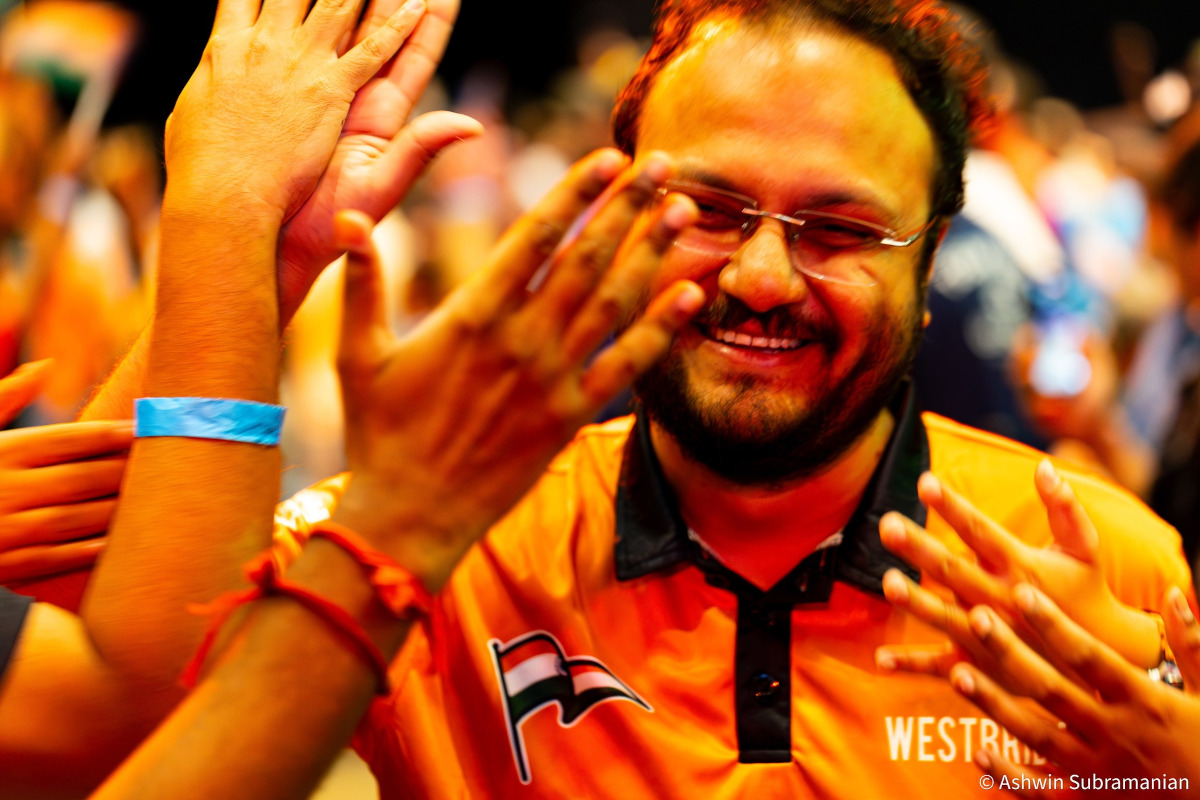
Fabiano Caruana and Sagar Shah entering the stage! | Photos: Ashwin Subramanian
Match lineups
The pairings were as follows:
- GM Hikaru Nakamura v. GM Gukesh Dommaraju
- GM Fabiano Caruana v. GM Arjun Erigaisi
- IM Carissa Yip v. GM Divya Deshmukh
- IM Levy Rozman v. IM Sagar Shah
- IM Tanitoluwa Adewumi v. IM Ethan Vaz
The first encounter featured Fabiano Caruana and Arjun Erigaisi, with the American grandmaster gradually taking control in a long strategic battle. The live commentary and crowd reactions gave the game a distinctly interactive feel, and Caruana converted his advantage after 60 moves to give Team USA an early lead.
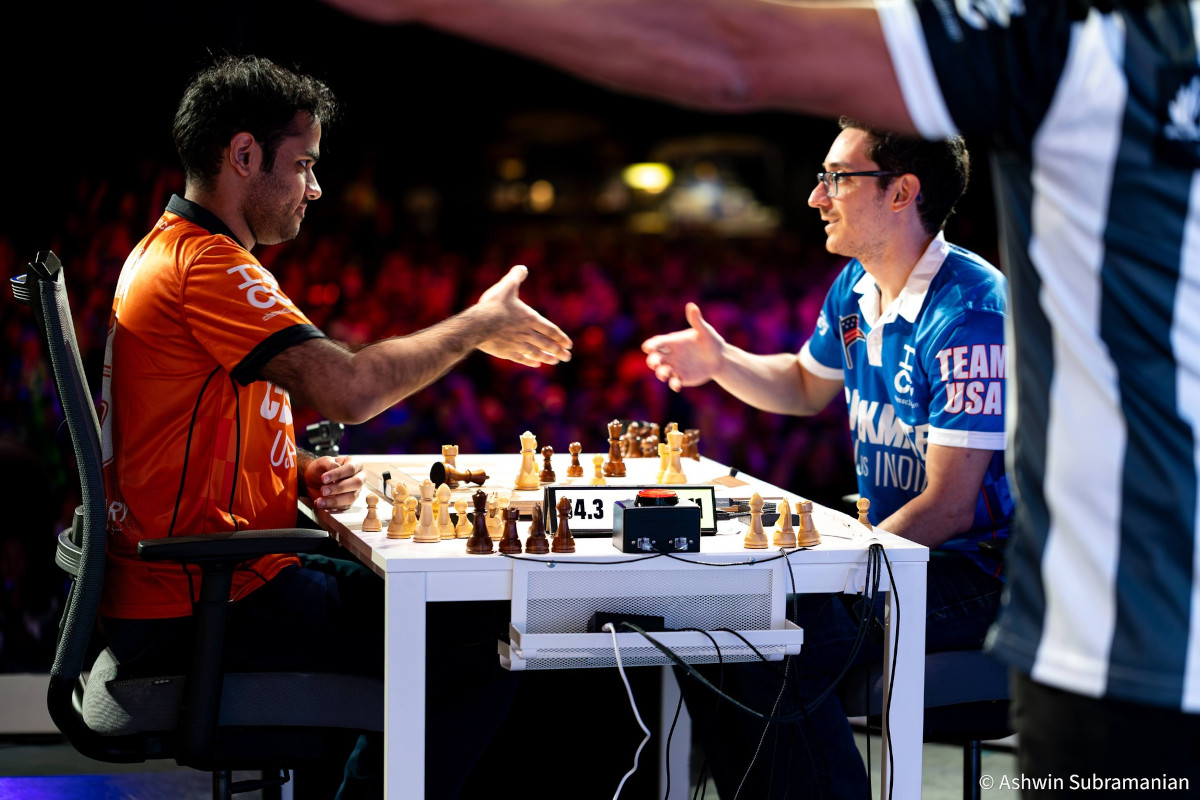
Fabiano Caruana defeated Arjun Erigaisi | Photo: Ashwin Subramanian
Next came the duel between the two 15-year-olds, Tanitoluwa Adewumi and Ethan Vaz, both already well known as prodigies. Adewumi, who first gained international attention in 2019 after winning a New York youth championship while living in a homeless shelter, prevailed in a wild tactical struggle. Vaz, who in the past was temporarily the youngest IM in the world when he earned the title at the age of 12, declined a threefold repetition and sacrificed an exchange in search of activity
But the Indian prodigy’s attack faltered and Adewumi’s counterplay proved decisive, doubling the US advantage.
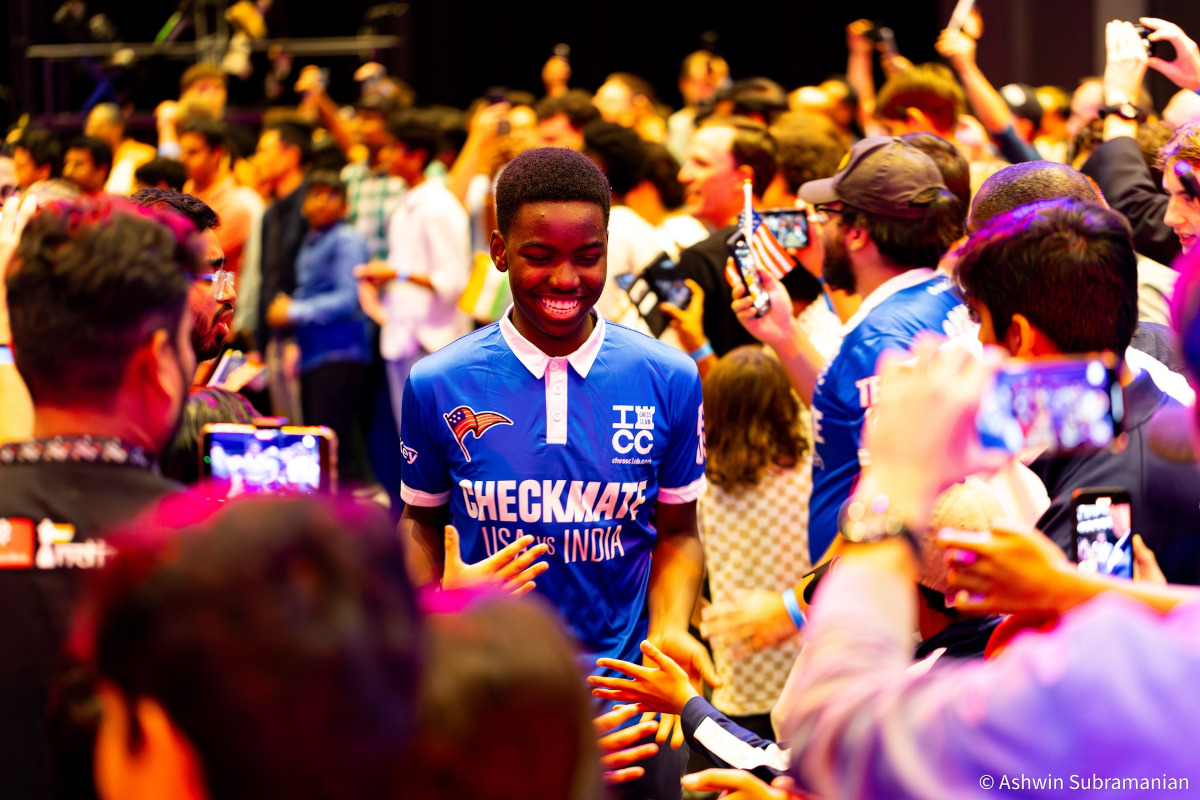
Tanitoluwa Adewumi | Photo: Ashwin Subramanian
The third match, between Carissa Yip and Divya Deshmukh, turned out to be the shortest of the evening. Yip, a three-time US women’s champion, obtained a winning position straight from the opening and secured victory on the clock when Divya ran out of time in a lost position. This result ensured overall match victory for Team USA, already leading 3-0.
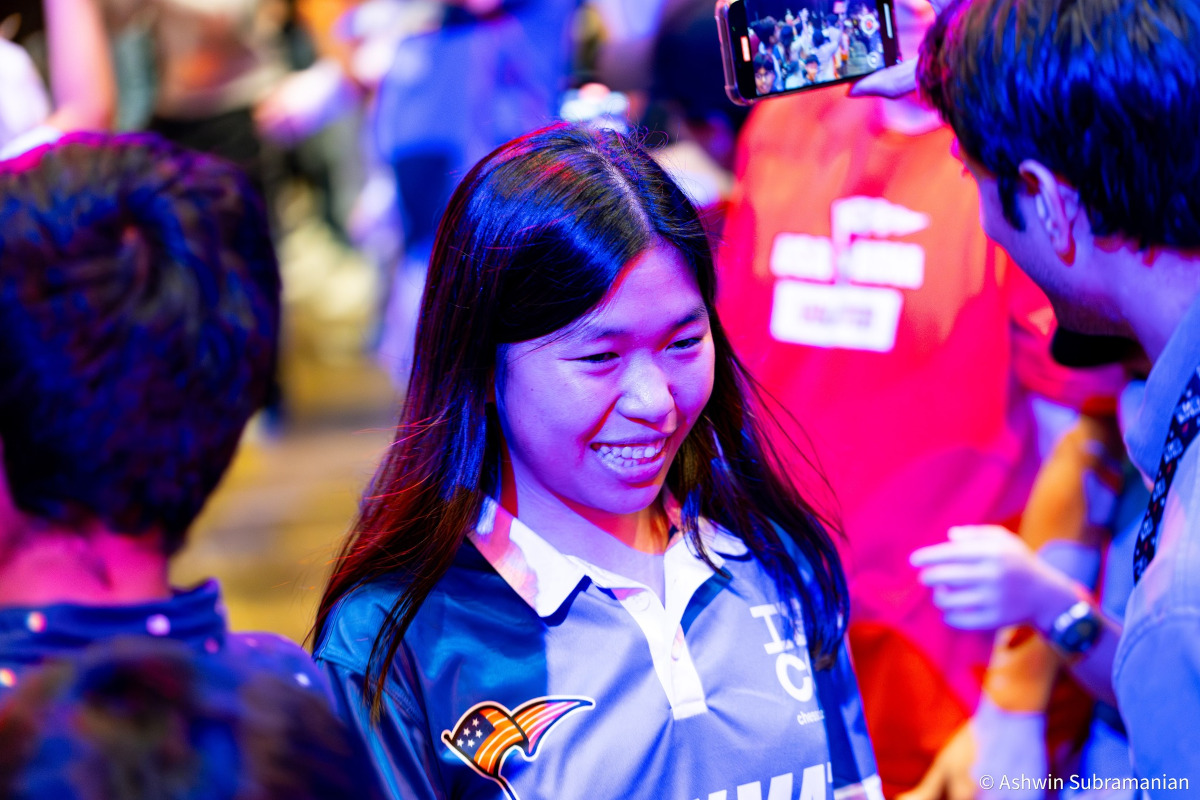
Carissa Yip | Photo: Ashwin Subramanian
In the fourth game, online personalities Levy Rozman and Sagar Shah provided the evening’s most light-hearted segment. To entertain the audience, Rozman allowed the crowd to choose his first move. The spectators picked 1.f4, leading to an unusual position that quickly simplified into a repetition of moves after Rozman consulted the crowd again on whether to agree to a draw.
A five-minute rematch followed. Shah obtained a clear advantage, winning a pawn early, but as both players dropped below ten seconds, chaos ensued. Shah accidentally knocked over pieces and was penalised with a time adjustment in Rozman’s favour. In the ensuing scramble, Shah blundered a piece and lost on time, extending the US lead to 4-0.
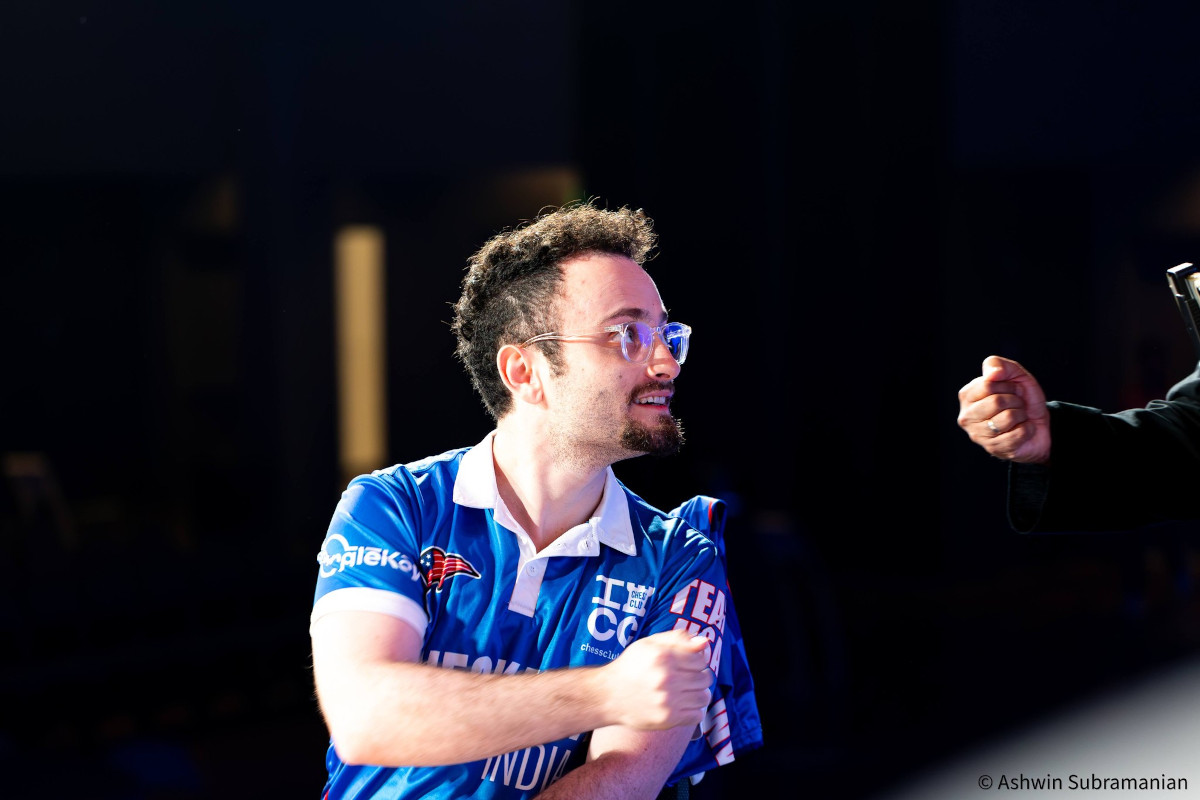
Levy Rozman | Photo: Ashwin Subramanian
Finally, Hikaru Nakamura and Gukesh Dommaraju took the stage for the marquee encounter. Their first game, a bishop ending, ended peacefully.
In the ensuing encounter, however, Nakamura opted for the unorthodox 1.b4 (players were not allowed to play the same first move in consecutive games). Gukesh soon gained the upper hand and appeared on the verge of victory, but extreme time pressure again played a decisive role. The world champion missed a defensive resource and blundered into a mating net just as a draw by repetition was within reach.
Grandmaster Dorian Rogozenco delves into Fischer’s openings, and retraces the development of his repertoire. What variations did Fischer play, and what sources did he use to arm himself against the best Soviet players? Mihail Marin explains Fischer’s particular style and his special strategic talent in annotated games against Spassky, Taimanov and other greats. Karsten Müller is not just a leading international endgame expert, but also a true Fischer connoisseur.
The win gave Team USA a sweeping 5-0 result, sealing a memorable evening for the hosts. Nakamura’s theatrical gesture with the captured king provided an unmistakable symbol of how far the event had ventured from convention.
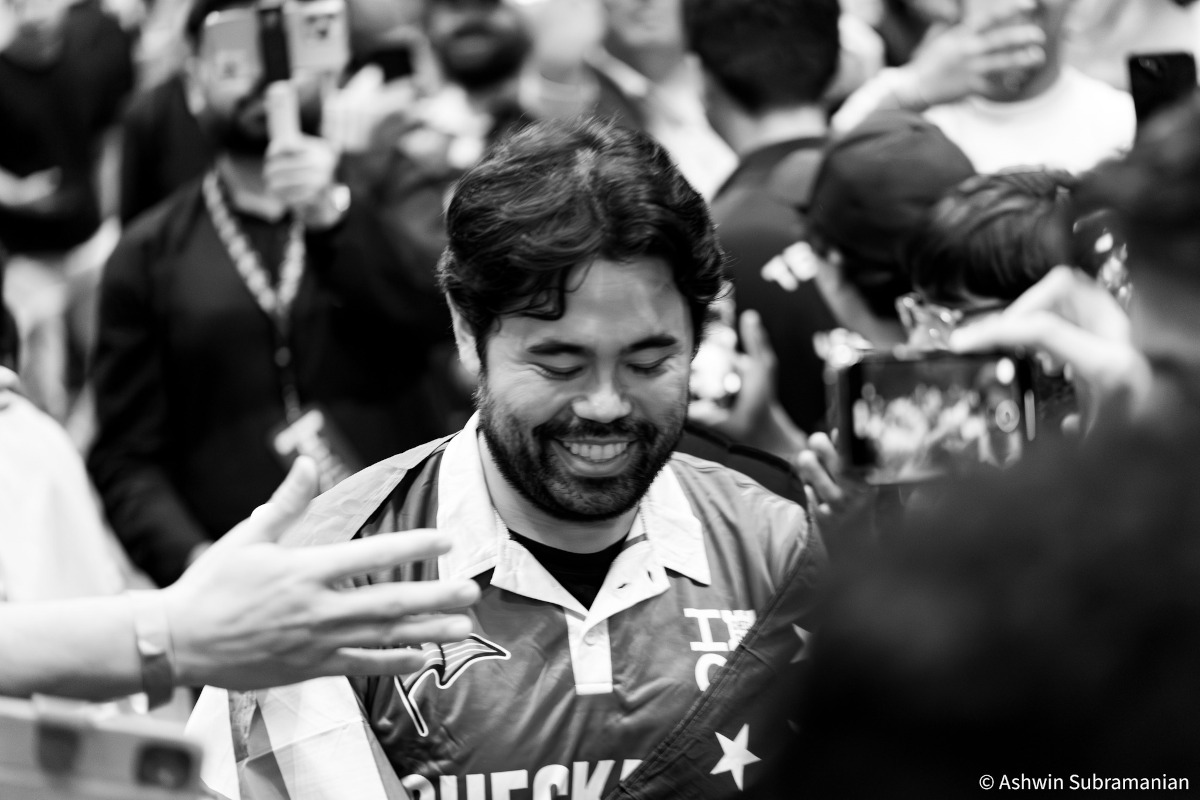
Hikaru Nakamura | Photo: Ashwin Subramanian
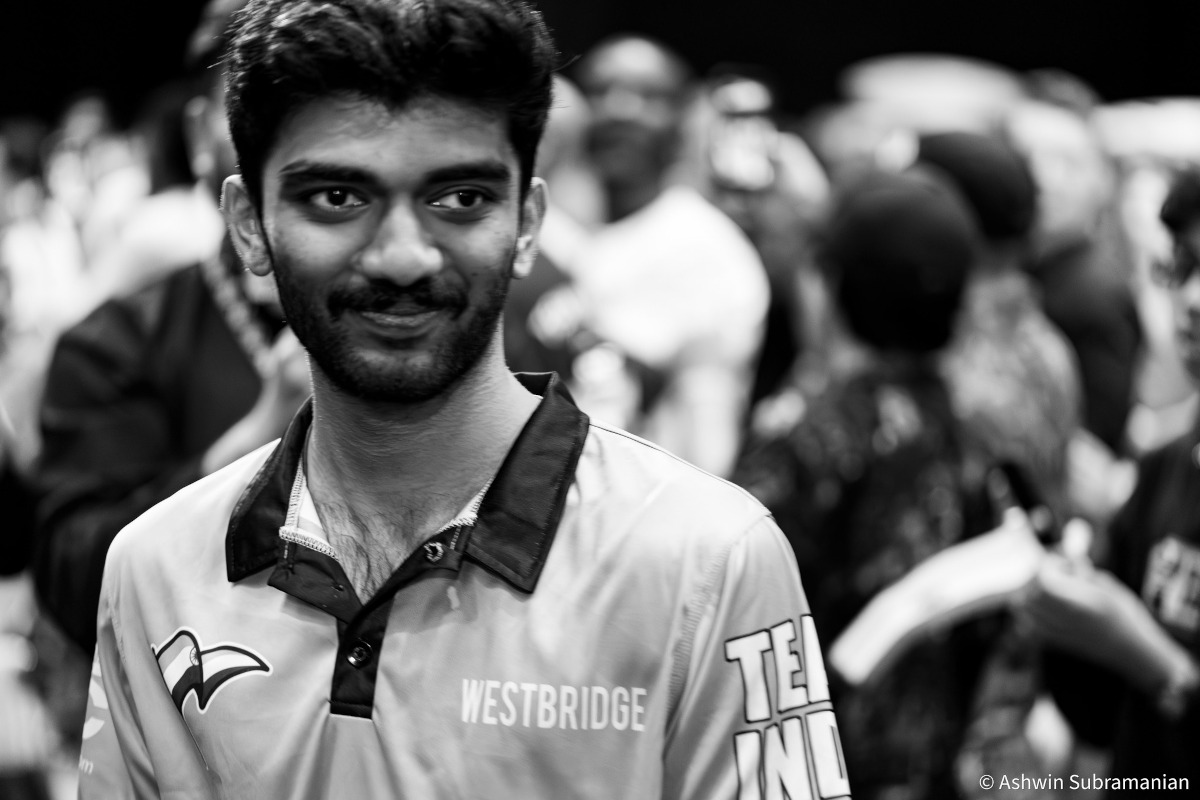
Gukesh Dommaraju | Photo: Ashwin Subramanian
